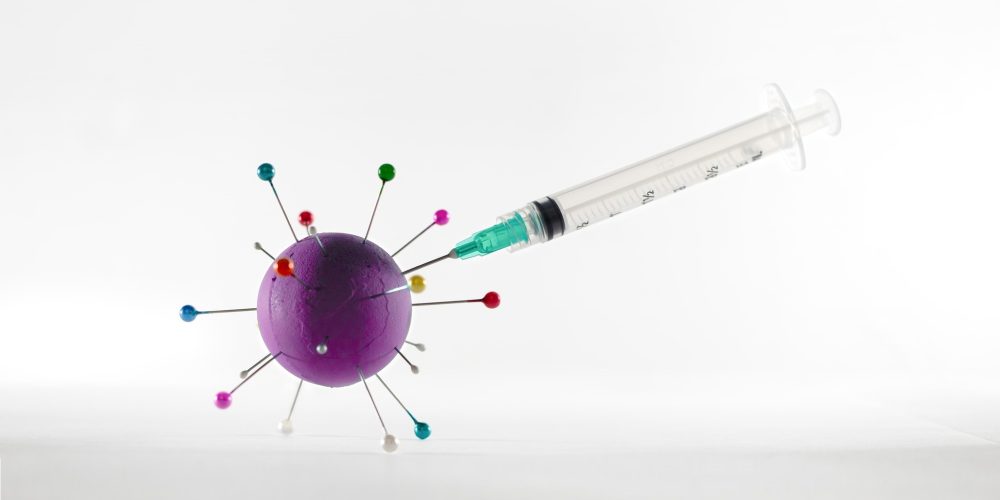Paul McNamara is a Principal GP in Glasgow and Honorary Clinical Lecturer at the University of Glasgow. He is on X: @DocPaulMcNamara
Scott Wylie is a 4th year medical student at the University of Glasgow
After a comparably quiet season last year, influenza returned emphatically this year, inflicting notable strain on primary and secondary care services. The number of GP appointments for flu-like illness was unseasonably high1 whilst overall flu cases were comparable to the counts of the 2022/23 season which brought considerable hospital burden.2 One might assume that these figures would give staff and patients extra motivation to get vaccinated, however, the figures detailing uptake this year suggest otherwise. As of 31 January 2025, only 38.3% of all frontline healthcare workers were immunised against influenza.3 Uptake among doctors was only 42.9%.3
More strikingly, vaccine uptake in frontline healthcare staff last year was at its lowest since 2010/11 – only 48.7% of doctors were immunised last year.
An important difference in the vaccination programme this season was its later start. Flu jabs began a month later than normal.4 It may therefore be argued that this year’s figures are incomparable to previous years. Looking instead at trends over the last seasons offers little comfort, however. In England, uptake in almost every group last year, including healthcare workers and over-65s, was down on the previous year.5 More strikingly, vaccine uptake in frontline healthcare staff last year was at its lowest since 2010/11 – only 48.7% of doctors were immunised last year.5 Whether or not this year’s uptake has followed the same trajectory, these figures paint a concerning picture. The numbers of patients hospitalised for flu this year illustrate the dangers of poor immunisation uptake.2
Declining uptake coincides with various alterations in vaccine delivery since the COVID-19 pandemic. One important inception is Scotland’s ‘Vaccine Transformation Programme’ which, from April 2022, moved all vaccine provision from GP-centred delivery to Health Board run initiatives.6 Resultingly, many boards have opted for drop-in or appointed vaccine clinics held at various sites from hospitals to health centres to designated vaccine hubs.6 For staff, however, who may have previously received their immunisations at their workplace, there is now the added effort of tracking down a drop-in clinic on their days off. Patients, who were previously vaccinated annually at their own GP practice, face the same difficulties of finding a vaccine clinic at a site they may not have attended before. It must be noted too that this process relies on efficient communication from Health Board to patients and staff regarding dates and times of, often sporadic, clinics. This new provision gives staff three options: travel to an NHS vaccine clinic on their day off, pay for their vaccine at a pharmacy at a more convenient location to them, or not get vaccinated at all. The validity of this conundrum is apparent as, due to difficulty obtaining an NHS immunisation because of logistics or the government’s new stricter eligibility criteria4, pharmacies were reported to have run out of stock at times throughout the flu season.7
Poor uptake cannot, of course, be put attributed to decreased accessibility only. There is a multitude of reasons for vaccine wariness, from the disproven MMR-autism scandal to more recent complications of the COVID-19 vaccines. Wariness must also be considered – post-covid ‘vaccine fatigue’ is frequently cited as a barrier to vaccine provision as staff and patients alike grow tired of perpetual calls for immunisations.8 For GPs and policymakers, these factors are mostly uncontrollable; they are dictated by the realms of science and culture within which medicine operates. The issue of accessibility, however, should be controllable, or at least more controllable. If a vulnerable patient or a frontline healthcare worker actively wishes to get their vaccine, surely the barriers to them getting it should be minimal.
If a vulnerable patient or a frontline healthcare worker actively wishes to get their vaccine, surely the barriers to them getting it should be minimal.
The UK Health Security Agency’s official immunisation programme training information for this flu season highlighted the uptake amongst healthcare staff last year, stating that access to vaccination for staff this season should have been ‘easy’ and ‘encourag[ing]’.5 It is positive that the issue was addressed but more work is clearly necessary to improve this in future seasons. On the other hand, the GMC states that doctors must ‘protect and promote the health of patients and the public’9 – this must include complying with any public health vaccine programme even if it requires some extra effort. As things stand, however, levels of stress are high and morale low amongst NHS staff.10 A sufficient level of staff time, effort, and motivation to have made this year’s vaccine programme successful may have been unattainable. A more comprehensive programme should consider extrinsic factors like this.
There have already been well-reasoned calls this year to expand the vaccination programme to the entire population (rather than just at-risk groups and healthcare workers) and to make immunisations ‘more easily and widely available’.11 With high infection rates and the prevalence of numerous demotivating influences on vaccine uptake, a programme which focusses on negating the controllable barrier of inaccessibility is essential. This does not necessarily require a return to GP-led vaccine clinics – GPs and their staff are already overburdened and inessential for giving immunisations – but a more organised, better signposted provision that improves access for busy staff and patients. It is worrying that even those who want their vaccine may struggle to source one. The figures suggest that uptake is already poor – we should be doing whatever we can to improve it.
References
- RCGP Research and Surveillance Centre. RSC Communicable and Respiratory Disease Report for England, week 3 of 2025. https://www.rcgp.org.uk/representing-you/research-at-rcgp/research-surveillance-centre/public-health-data [Accessed 29th Jan 2025]
- GOV.UK. Press release: Excess deaths associated with flu highest in 5 years. https://www.gov.uk/government/news/excess-deaths-associated-with-flu-highest-in-5-years [Accessed 24th Jan 2025]
- GOV.UK. Seasonal influenza vaccine uptake in frontline healthcare workers, England: 1 September 2024 to 31 January 2025 graphs https://www.gov.uk/government/statistics/seasonal-influenza-and-covid-19-vaccine-uptake-in-frontline-healthcare-workers-monthly-data-2024-to-2025/seasonal-influenza-vaccine-uptake-in-frontline-healthcare-workers-england-1-september-2024-to-31-january-2025-graphs [Accessed 19 Mar 2025]
- GOV.UK. National flu immunisation programme 2024 to 2025 letter. https://www.gov.uk/government/publications/national-flu-immunisation-programme-plan-2024-to-2025/national-flu-immunisation-programme-2024-to-2025-letter [Accessed 24th Jan 2025]
- GOV.UK. Collection: Annual flu programme. https://www.gov.uk/government/collections/annual-flu-programme#2024-to-2025-flu-season [Accessed 24th Jan 2025]
- Scottish Government. Vaccine Transformation Programme (VTP). https://www.gov.scot/publications/vaccination-transformation-programme-vtp-foi-release/ [Accessed 19 Mar 2025]
- Jones, J. Drug Shortage: Scots pharmacies running out of vaccines as flu-bomb batters Scotland with hundreds in hospital. The Scottish Sun. 5 Jan 2025. https://www.thescottishsun.co.uk/health/14118991/vaccines-shortage-scotland-flu-crisis/ [Accessed 19 Mar 2025]
- Su Z. (et al). Mind the “Vaccine Fatigue”. Frontiers in Immunology. 2022;13(839433). doi: 10.3389/fimmu.2022.839433
- General Medical Council. The professional standards. https://www.gmc-uk.org/professional-standards/the-professional-standards [Accessed 25th Jan 2025]\
- Waters, A. NHS staff survey underlines need for national workforce strategy. BMJ. 2022;377. doi: https://doi.org/10.1136/bmj.o871
- Broadbent, L. Winter viruses: we can do more to prevent a surge in cases. BMJ. 2025;388:r77. doi: http://doi.org/10.1136/bmj.r77






